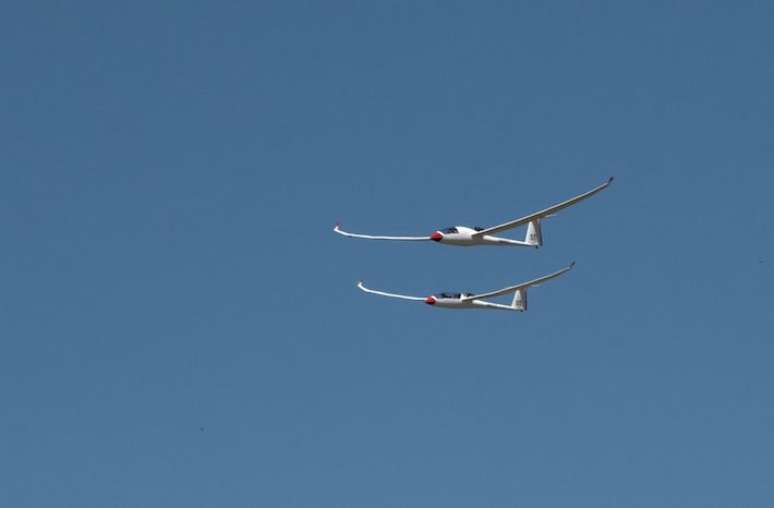The Blue Condor Initiative seeks information on the fuel, which is in the company’s planning as a sustainable alternative
The aircraft manufacturer Airbus is leading a project that aims to study the traces left by planes powered by hydrogen in the air during flight. The project Blue Condorcarried out through the subsidiary UpNext, tries to find out which gases are generated during circulation, if there is a difference compared to the current main fuel, the keroseneand how much this affects the environment.
Running since late 2020, Blue Condor is in its third phase.
The first phase consisted of finding all the technological components and a flying platform that could be retrofitted with a hydrogen system and a hydrogen combustion engine. Furthermore, it was necessary to structure a trail-chase operation with a specific aircraft to transport all the necessary instrumentation.
The second phase of the project was dedicated to ground and flight testing, carried out until November 2022, to ensure that the hydrogen system and hydrogen combustion engine operated safely and performed as required. Hydrogen was the main fuel of all.
The third and most important phase is data collection. The Blue Condor aircraft will be towed by a Grob Egrett aircraft to an altitude of 33,000 feet (about 10,000 meters) and then released. This “chase” aircraft will follow, using sensors to collect and analyze atmospheric and trail data. There are no preliminary data yet.
According to José Días Vides, the engineer responsible for the project, Blue Condor was the fastest way to understand the formation of traces left by the combustion of hydrogen. “What would be the implications of this new energy path? Everything will be measured and recorded by instruments to detect what comes out of the plane’s exhaust,” he summarizes.
Over the next year, those responsible hope to carry out further measurements and obtain comprehensive data on the size and concentration of the ice crystals formed, the temperature and humidity of the air in the environment, and even what else comes out of the exhaust of the engine. , which particles could fly and contribute to forming trails.
Fuel in the foreground
Hydrogen is seen as a major sustainable alternative to fossil fuels. The main byproduct of hydrogen combustion is water, but nitrogen oxides can also be generated, which requires attention.
Hydrogen is mainly considered an alternative for heavy industriessuch as aviation, shipping, steel production and others with high energy demands. It is also seen as a way to store energy generated from intermittent sources such as solar and wind: the electricity generated by these forms would be used to produce it and, therefore, it would be possible to guarantee supply in periods without sun or wind .
Fuel can be classified into colors based on its origin. For example, hydrogen that comes from other renewable sources is green; what is produced from natural gas (a fossil fuel) is gray or blue, depending on whether the process captures CO2 or not; the one taken directly from nature is white; those produced with nuclear energy are pink, if electricity is used, and purple, if thermal energy is used.
For aviation, hydrogen could be great in terms of performance. “It is possible to extract three times more energy per kilogram than from conventional kerosene, or even from SAF,” reports Vides, referring to a type of biofuel (sustainable aviation fuel).
However, while hydrogen brings more energy, it also brings practical challenges. Today, kerosene or SAF is stored in tanks on the wings of airplanes, which do not run on hydrogen. It would therefore be necessary to redesign the aircraft to be able to use it.
“Hydrogen is a very, very attractive alternative energy source. But, technologically, we need to develop a new way of storing the fuel inside our aircraft to be able to use it efficiently and transport it from place to place,” comment See.
With this problem, it would also be necessary to increase hydrogen production worldwide to ensure supply for aviation and other industries, regulating the price and creating an economically viable ecosystem for exploration. So while it’s an important part of Airbus’ sustainability program, the fuel is just one alternative – SAF is another well-regarded one.
According to Vides, the company is already thinking about the development of hydrogen-powered aircraft: there are three models in the design phase, whose launch is expected between 2030 and 2035. In turn, the SAF is already used in aviation commercially, alone or combined with kerosene, albeit on a very small scale.
In Brazil, the regulatory framework for the SAF was approved by Congress and sanctioned, in Proposed law “fuel of the future”.while the low-carbon hydrogen development program it is in the Senate, after approval by the House.
Other projects
In addition to Blue Condor, UpNext has two other projects that aim to develop technology to eliminate Airbus’ carbon emissions. One is Ascend, which looks at using superconductivity in electric motors for use in future hydrogen-powered aircraft as a way to extract and transmit more energy.
The other aims to increase the performance of the wings, with technologies being tested to optimize dynamics, and which are suitable for any form of propulsion and aircraft configuration. With improved wing performance, a reduction in CO2 emissions is expected.

Source: Terra
Rose James is a Gossipify movie and series reviewer known for her in-depth analysis and unique perspective on the latest releases. With a background in film studies, she provides engaging and informative reviews, and keeps readers up to date with industry trends and emerging talents.






